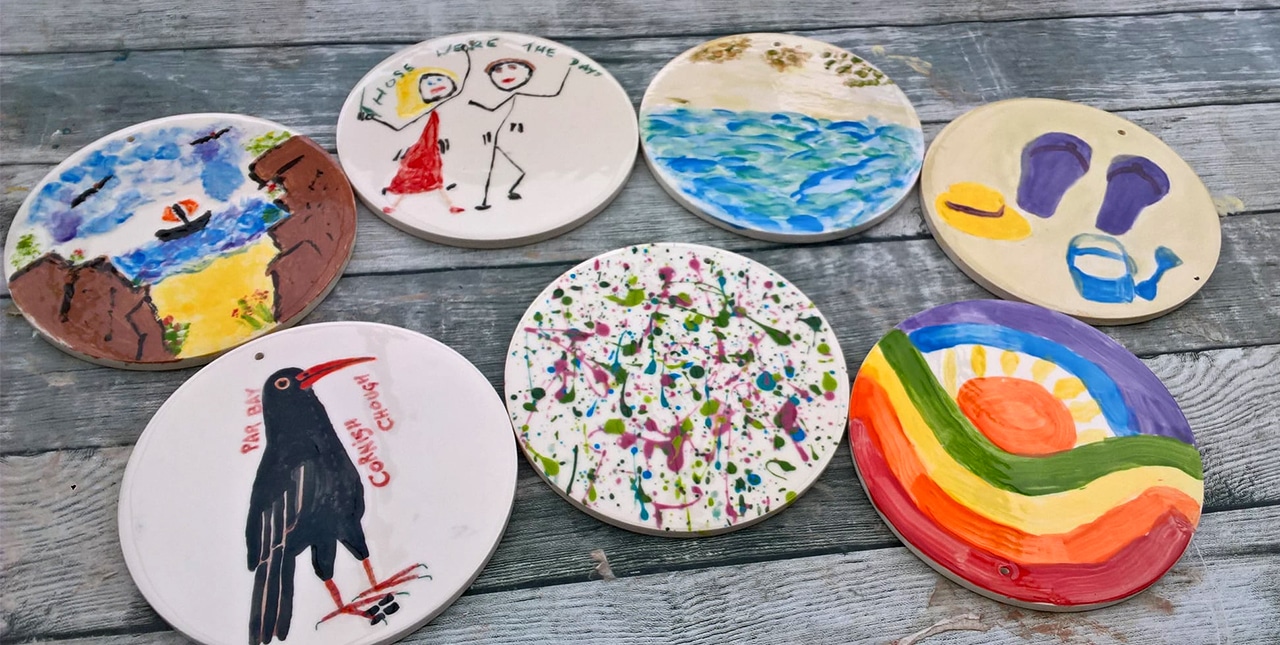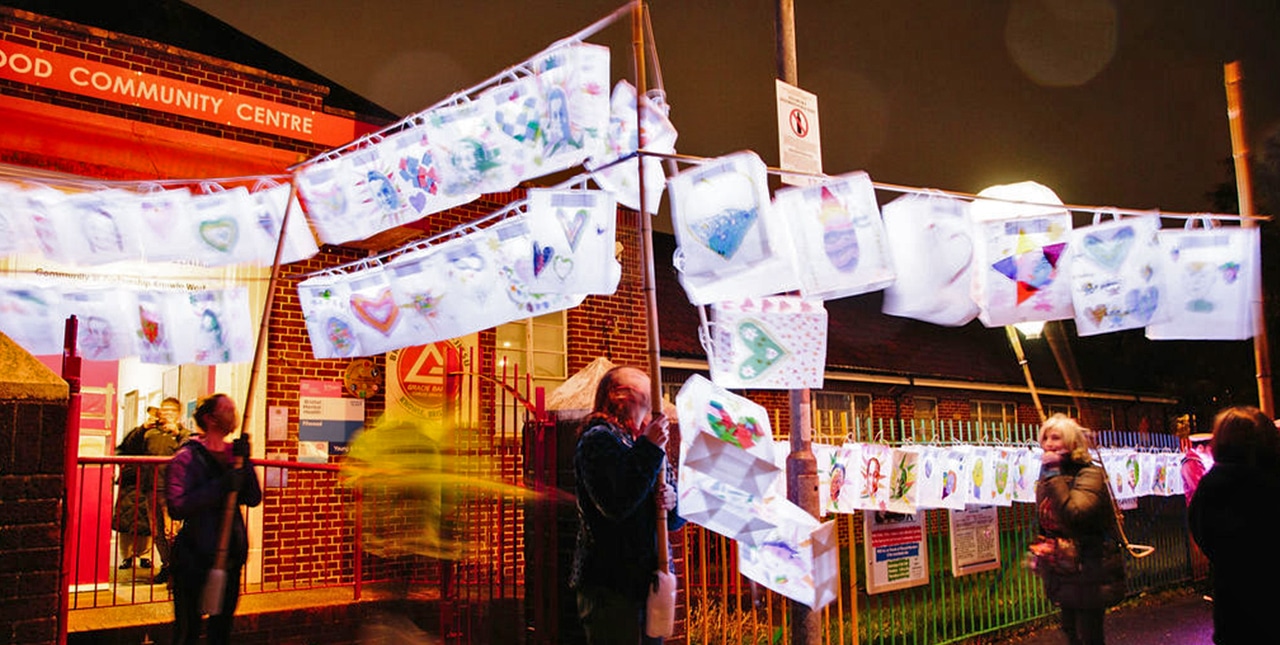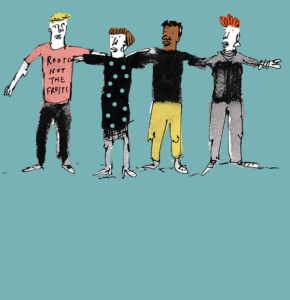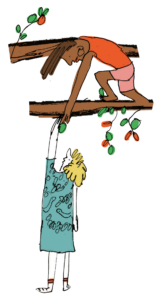-
About
About
Local Trust is a place-based funder supporting communities to achieve their ambitions.
Find out moreGo straight to…
< Back to main menu -
Big Local
Big Local
Big Local is an exciting opportunity for residents in 150 areas to create lasting change in their communities.
About the programme< Back to main menuSupport centre
Essential guidance, information and ideas for Big Local partnerships, to help you deliver change in your community.
Visit the support centre -
Other programmes
Other programmes
Find out how the principles of Big Local have inspired other programmes creating change in local communities.
< Back to main menuCommunity Leadership Academy
Supporting volunteers involved in Big Local projects to develop their skills and knowledge.
Find out moreCreative Civic Change
This new approach to funding enabled communities to use art and creativity to make positive local change.
Find out more
-
News and stories
News and stories
The latest news and stories from Big Local areas and beyond, exploring community power and resident-led change.
ExploreGo straight to…
< Back to main menuVoices of Big Local
Inspiring stories from the people making change happen in their communities.
Read more - Insights
- Policy

-
About
About
Local Trust is a place-based funder supporting communities to achieve their ambitions.
Find out moreGo straight to…
< Back to main menu -
Big Local
Big Local
Big Local is an exciting opportunity for residents in 150 areas to create lasting change in their communities.
About the programme< Back to main menuSupport centre
Essential guidance, information and ideas for Big Local partnerships, to help you deliver change in your community.
Visit the support centre -
Other programmes
Other programmes
Find out how the principles of Big Local have inspired other programmes creating change in local communities.
< Back to main menuCommunity Leadership Academy
Supporting volunteers involved in Big Local projects to develop their skills and knowledge.
Find out moreCreative Civic Change
This new approach to funding enabled communities to use art and creativity to make positive local change.
Find out more -
News and stories
News and stories
The latest news and stories from Big Local areas and beyond, exploring community power and resident-led change.
ExploreGo straight to…
< Back to main menuVoices of Big Local
Inspiring stories from the people making change happen in their communities.
Read more - Insights
- Policy
What made Creative Civic Change possible?
Explore the principles and values that guided the Creative Civic Change programme, and the resources and support that made it possible.
Principles
Principles of community leadership and creativity were fundamental and explicit in the design and delivery of Creative Civic Change. Our evaluation identified nine other, equally important, values that guided the work.
Trust was present in all facets of the programme and it started with feeling trusted by the funders.
“I think that there’s a lot of trust, obviously, it’s in the name. And freedom in this, and I think that it is immeasurable and unbelievable what that does for your soul, and your confidence and your sense of empowerment.” (Project worker)
This feeling of being trusted enabled greater honesty between the projects and the funder, project workers were able to share the challenges they were facing, and discuss solutions together, they didn’t feel judged or that they would be penalised if things didn’t go to plan.
Trust was gifted to Creative Civic Change communities, rather than them having to earn it. A number of groups hadn’t been in existence for very long before they applied to the programme, they didn’t have established track records, and they described how the funders ‘took a chance’ on them.
There was the trust. And so we were able to kind of gift that trust on really. Take risks and trust people rather than panicking about that stuff, administration around it… this fund in particular just set a completely different tone that we could then emulate and operate in a way.”
Project worker
This trust then had a ripple effect, as it was passed on, to artists, to communities and to partners. Projects workers trusted their communities and their artists, and this trust was reciprocated.
One project worker described a powerful moment when they handed over the keys to a temporary community space to a resident, and a partner, (a project on behalf of a national charity, that many communities are wary of) talked about how, when they sat next to a CCC project worker on a stall at the local market, they in turn benefitted from the trust that the community had in that individual.
“It’s almost like those groups endorsing you and saying she’s alright. You can work with them. And that there’s not lots of places that you can get that from. So for me, that’s the ripple effect, is that people trust us.” (Partner)
Creative Civic Change projects created an interconnected web of care across project workers, communities and artists.
Project workers spoke about how they felt cared for by their colleagues, how their ‘emotional health’ was looked after; artists described being supported and mentored by the Creative Civic Change projects, particularly those who described themselves as ‘emerging’ artists. Many people likened their involvement with Creative Civic Change to a family.
“[The writing group] tend to be like a little family and we’ve opened up… we support each other mentally… We do that because it’s all about care … it’s not just the writing, it’s a safe place to go and be able to put it on paper and get it off your mind.” (Community member)
Creative Civic Change projects listened and responded to changing needs. During the pandemic this included remembering and celebrating the work of local people; devising at home creative activities and doorstep performances; pop up gigs and street art. Throughout the project, they paid attention to what their communities wanted and needed.
“Communities work a lot faster, you know, then a three year plan, they had projects, they’ll be like, ‘Oh, actually, we want to do this this week, or next month’, and just being able to flex around that. And that made people want to be more involved. And it made us be able to do things that were needed in that moment.” (Project worker)
Communities adopted an experimental mindset, trying things out, learning and adapting along the way. They felt free to be flexible, to change their plans if things weren’t working, knowing they wouldn’t be penalised:
“To have that freedom to just try things out, I think really has a big impact on how and what is created and in what ways the groups work together, you know, being able to try things out and having that permission to fail.” (Project worker)
Further reading
The Creative Civic Change evaluators asked Professor Leila Jancovich, from the Hard Times Require Furious Dancing project, to explore with three Creative Civic Change areas to find out how these projects defined, talked about, and responded to failure.
Everyone was pro-actively invited and welcomed at Creative Civic Change activities, in working groups, and staff teams. Whatever their background or life experience, no-one was judged and people could be their full selves.
“No one’s ever left out of the conversation. Everyone’s got their own input. Like for me … I didn’t know anything about art, you never laughed at me because I don’t know about something and I’ve felt like I’m included in it. So I feel that yeah, no one’s ever left out.” (Community member)
“I’ve come from a service users background, coming from a broken family … it’s given me a place where I can be me and open up and just be myself.” (Community member)
“I started off as a resident and then started to work on the project, and accepted is a big word for me, I was welcomed for who I was, I was able to be open with everyone about what I needed as I’m dyslexic.” (Community member and project worker)
There was a sense of possibility and positivity; projects said yes to ideas and suggestions, groups found solutions together and the conversation was about what could be done, not what couldn’t.
The positivity. Absolutely. Every time I’ve ever been involved with anything, there’s just nothing but positivity. It’s wonderful. I love it.”
Artist
All achievements, large, and especially small, were recognised and celebrated:
“It’s success that is personal and individual. It’s not a massively great success. It is that first line on the sewing machine, picking up a crochet hook. It’s those little successes then build a big success” (Community member)
Projects ‘got on and did stuff’, things happened, and were visible, they balanced their listening and talking with doing. This was contrasted with other local initiatives that spent more time saying what they were going to do, and less time actually doing it.
“We say we’ll do it and then it happens.” (Community member)
Communities were focused on long term change; they thought and cared deeply about the future, for their families and neighbours and for the natural environment.
Many projects reclaimed unloved and unused spaces in their neighbourhood, planting trees and vegetables; one went as far as creating a 100 year plan in their community; and for another, coastal community there was a climate change wake-up call.
“Over the three and a half years, there’s been a huge awareness about climate change and rising sea levels. And that, I think, should have been more part of the programme from the beginning.” (Project worker)

From Creative Civic Change project PAR-teee in Par Bay, Cornwall.
Resources
Creative Civic Change projects drew on a range of resources to power their activities.
The investment of around £200,000 spread over four years was long enough to make progress towards the longer term ambitions that the CCC communities have; it enabled deeper relationships to grow, and allowed projects to work at the right pace for them.
“I think the time … has enabled that relationship to build, to be what it is now. Whereas if it might be much shorter term, I just don’t know if you can really build that kind of relationship with each other. Yeah, it’s knowing the team’s skills and abilities. We all know each other’s strengths and weaknesses.” (Project worker)
Further reading
The Creative Civic Change partners share their reflections on the programme and discuss how it will impact their approach to funding in the future.
Although not large by many standards – around £200,000 over four years – the scale of the CCC funding was a significant step up for a number of projects, that are small, community based organisations.
Many commented that local stakeholders became more aware of them, and their work, and for some, the CCC funding was a catalyst for more ambitious fundraising and activities.
Having a big wedge (of funding) really got the council to pay attention … I think the council and others who maybe didn’t have faith in us, suddenly paid a bit more attention, and as you start to deliver stuff, good stuff, as you’ve actually got the capacity and the money to do it well, so people don’t think you’re rubbish.”
Project worker
Creative Civic Change communities’ greatest asset was their people. They had the time and space to find, connect and platform the skills, knowledge and passions of local residents.
There were multiple ways for people to get involved, whether it was employment as part of the project team, leading activity programmes, initiating creative workshops, or simply turning up and having fun:
“I’ve got friendships and relationships with people that I would never have imagined … there are no saviours, there’s nobody on a white horse, there’s no messiahs, it’s always our people. And that’s what we have. And our greatest, most valuable asset is those people and those relationships, and you never, ever mess with that.” (Project worker)

From Creative Civic Change project Filwood Fantastic in Bristol.
Support
The Creative Civic Change programme also provided a range of support to the projects.
A programme of peer learning provided regular opportunities for workers and community members involved in Creative Civic Change to come together to share experiences, learn and celebrate together.
Those involved described how the peer learning programme enabled them to connect with other projects in the programme, how it provided support and reassurance (particularly at the height of the pandemic), and how they found allies and formed friendships:
Bringing people together in celebration and celebrating us, as practitioners, and celebrating our communities and welcoming people in, giving people space and a voice and letting people play and talk and do interesting things. You know, that’s been just huge.”
Project worker
All the Creative Civic Change communities could access a range of support to help them deliver their programmes. This included a critical friend, who described their role as encompassing:
- listening and reflecting (‘someone to be there’)
- mentoring (hand holding)
- signposting and ideas (sharing links, connections and reading)
- holding (space, the ambition and the vision)
- being supportive (valuing, encouraging and celebrating, seeing ideas happen)
- enquiring (challenging and being honest)
- witnessing (successes, growth of people, activity and challenges)
The communities could also access a separate range of specialist expertise in whatever topics were most needed, for example community asset transfer and the public realm.
The evaluation team also helped communities to undertake their own evaluation activities, with group sessions on influencing, storytelling and interviewing, as well as one–to–one advice:
“[Our critical friend] comes from a completely different place from me, you know. And her challenges have been really excellent. I found that when we’re all coming to a collective conclusion. And she’ll suddenly say, ‘I have a little provocation’ … ” (Community member)
All the Creative Civic Change projects spent their first six months listening to their community, building relationships, and creating a set of shared ambitions for their work.
This laid a firm foundation for the work that followed. In the evaluation conversations, many projects described how the ambitions and aims agreed at this stage became the guiding lights that steered them through the (often difficult) years that followed, recalling the creativity, ambition and fun of these sessions
Stakeholders too described how their local Creative Civic Change appeared to have a really clear sense of where they were going:
“A plan that we felt was led by the community and their needs and hopes … that’s given us ... the confidence to take risks, to trust one another … a framework that has guided us through this project.” (Project worker)
The programme manager, who was frequently mentioned by name, took a relational approach to the Creative Civic Change communities, working alongside, caring for them, and supporting them to achieve their goals:
“I think it’s felt like a really collaborative relationship. [The programme manager] has always been really open and accessible. And I think that’s really helped. Given us the confidence to run the project in the way we want to … And she’s always been really approachable. So where we have had like little bumps or something, she’s just been really encouraging, really supportive, really clear, it’s just made it easier.” (Project worker)
Our new website launches January 2026 with 15 years of Big Local insights. Sign up to our newsletter to stay updated.
Our new website launches January 2026 with 15 years of Big Local insights. Sign up to our newsletter to stay updated.

